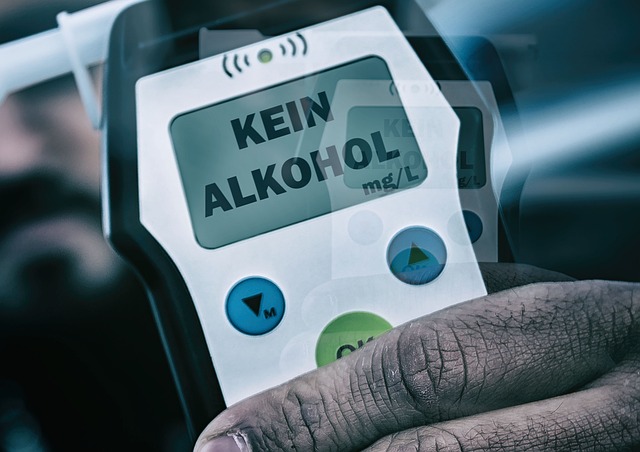In many legal systems, flexible alternatives to traditional sentencing for Drug Interaction and DUI Law violations exist, including community service, rehab programs, and educational workshops on safe driving and drug interaction dangers. Recent advancements in understanding drug interactions have influenced DUI laws, emphasizing the impact of substances on alcohol's effects. Alternative sentences like community service aim to balance public safety and rehabilitation, but may not address complex issues like drug interactions. Educational programs teach about risks, but their success depends on individual commitment. Effective alternative sentencing requires tailored solutions, addressing medication management for co-occurring disorders, and balancing client health needs with legal adherence, ultimately promoting well-being and public safety.
“In the world of DUI (Drunk Driving) law, understanding alternative sentencing options is crucial, especially considering drug interaction’s significant impact. This article navigates through various alternatives, offering a comprehensive guide for those facing such charges. We explore how drug interactions influence DUI laws and delve into the pros and cons of common programs. Additionally, we highlight legal considerations regarding navigating drug interaction within these alternative sentencing frameworks.”
- Understanding Alternative Sentencing Options for DUI Cases
- Drug Interaction and Its Impact on DUI Laws
- Pros and Cons of Common Alternative Sentencing Programs
- Navigating Drug Interaction in Alternative Sentencing Programs: Legal Considerations
Understanding Alternative Sentencing Options for DUI Cases

In many jurisdictions, alternative sentencing options are available for individuals charged with Drug Interaction and DUI law violations. These alternatives offer a more flexible approach to punishment, acknowledging that traditional sentencing may not always be the most effective way to address the underlying issues associated with DUI cases. Options can include community service, participation in drug or alcohol rehabilitation programs, or attendance at educational workshops focused on the dangers of substance interaction and safe driving practices.
Understanding these alternatives is crucial for both accused individuals and legal professionals. By exploring these options, defendants may find more compassionate and constructive resolutions to their charges. Moreover, recognizing the availability of alternative sentences can encourage proactive measures to prevent future incidents by fostering a deeper understanding of the complexities surrounding Drug Interaction and DUI laws.
Drug Interaction and Its Impact on DUI Laws

In recent years, understanding drug interaction has become a pivotal factor in shaping DUI (Driving Under the Influence) laws. The impact of various substances on an individual’s cognitive abilities and reaction times is now more thoroughly considered, leading to alternative sentencing options. Drug interactions can significantly alter the effects of alcohol, potentially enhancing or masking its impairment-causing properties. This complexity has prompted legal systems to adopt a more nuanced approach, recognizing that not all DUI cases are created equal.
When evaluating a case, courts now take into account any co-ingestion of medications or illegal substances, as these interactions can influence breath and blood alcohol concentration (BAC) readings. This consideration is crucial in determining appropriate sentencing, especially for first-time offenders who might have legitimate medical reasons for taking certain medications. As such, the field of pharmacokinetics plays a vital role in shaping DUI laws, ensuring that justice is served while also factoring in the unique circumstances surrounding each case.
Pros and Cons of Common Alternative Sentencing Programs

Alternative sentencing programs for DUI (Driving Under the Influence) cases offer a range of options beyond traditional incarceration, aiming to balance public safety with rehabilitation and reducing recidivism. One popular program is community service, where offenders perform unpaid work for local organizations or governments. This approach has advantages such as fostering a sense of accountability while also providing necessary services to the community. Additionally, it can help individuals develop new skills and perspectives, potentially deterring future substance abuse and reckless behavior by addressing underlying issues.
However, there are challenges. Community service may not adequately address the complex issues surrounding DUI, including drug interactions and the underlying causes of addictive behaviors, which are often complex and multifaceted. Furthermore, while it offers a chance for personal growth, successful completion depends on individual motivation and support systems, factors that aren’t always guaranteed. In contrast to community service, education-focused programs teach participants about the dangers of alcohol and drug interaction in DUI situations, potentially reducing future incidents. Yet, their effectiveness hinges on commitment and may not appeal to everyone, underscoring the need for tailored, comprehensive solutions within alternative sentencing frameworks.
Navigating Drug Interaction in Alternative Sentencing Programs: Legal Considerations

Navigating drug interaction in alternative sentencing programs for DUI (Driving Under the Influence) cases involves a complex interplay of legal considerations. When an individual is convicted of DUI, traditional penalties include fines, imprisonment, and license suspension. However, alternative sentences focus on rehabilitation and community reintegration, often involving drug treatment programs instead of jail time. The legal framework surrounding these alternatives must account for potential drug interactions between the offender’s existing medications and substances they may be required to abstain from under the program.
Drug interaction concerns are significant in DUI cases because many individuals convicted have co-occurring substance use disorders. Alternative sentencing programs that include drug treatment must ensure medication management that doesn’t counteract or diminish the effectiveness of rehabilitation. Lawyers and judges play a crucial role in ensuring these considerations, advocating for clients’ health needs while adhering to DUI laws. Effective navigation of drug interaction issues can lead to more successful outcomes for both individuals and public safety.
In conclusion, alternative sentencing options for DUI cases offer a nuanced approach to addressing drug interaction and its impact on existing DUI laws. By understanding the pros and cons of various programs and navigating the complex legal considerations surrounding drug interactions, legal professionals can provide more effective and fair solutions. This balanced approach ensures that justice is served while also recognizing the unique challenges faced by individuals involved in DUI incidents, ultimately contributing to a safer and more compassionate criminal justice system.






